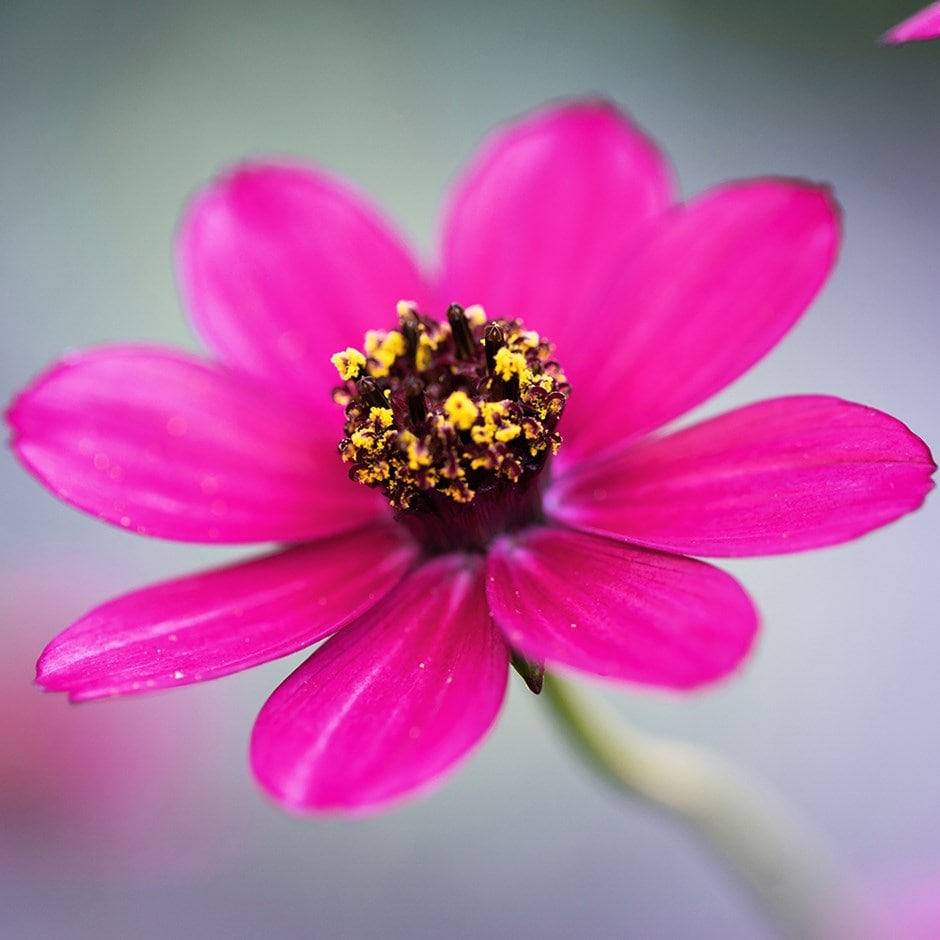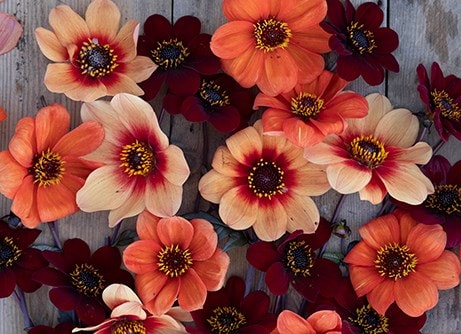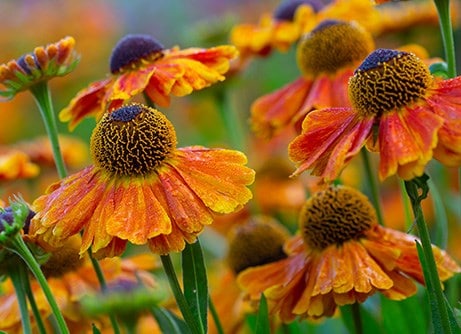
Boasting sumptuous, velvety cherry-hued blooms atop lance-shaped, blue-green foliage, Cosmos atrosanguineus ‘Cherry Chocolate’ is a standout in any sunny border, offering a striking contrast when paired with other vibrant hues.
Awarded second place as Plant of the Year by the RHS at the Chelsea Flower Show 2024, this cutivar features the largest flowers among atrosanguineus cultivars, measuring 7cm (3in) across. Its allure is further enhanced by its chocolate fragrance emanating from its blooms, enticing both humans and pollinators alike.
To safeguard against frost damage, consider protecting its tuberous roots with a cloche or overwintering in a frost-free environment, ensuring its beauty for seasons to come.
Awarded second place as Plant of the Year by the RHS at the Chelsea Flower Show 2024, this cutivar features the largest flowers among atrosanguineus cultivars, measuring 7cm (3in) across. Its allure is further enhanced by its chocolate fragrance emanating from its blooms, enticing both humans and pollinators alike.
To safeguard against frost damage, consider protecting its tuberous roots with a cloche or overwintering in a frost-free environment, ensuring its beauty for seasons to come.
How to care for Cosmos atrosanguineus Cherry Chocolate ('Vg001') (PBR):
Plant Cosmos atrosanguineus in frost-free conditions, in a sunny spot with well-drained soil, spacing the plants 30-40cm (12-15in) apart.
Water thoroughly, keeping the soil moist but not waterlogged, and mulch to retain moisture and suppress weeds. Fertilise in spring and mid-summer, and deadhead spent blooms to encourage continuous flowering.
In cooler locations, dig up the tubers in autumn, reduce the stems to within 5cm (2in) of the roots, and store them in a cool, dry place for replanting in spring. Alternatively, mulch with a thick layer of compost over the winter to protect the plants.
Water thoroughly, keeping the soil moist but not waterlogged, and mulch to retain moisture and suppress weeds. Fertilise in spring and mid-summer, and deadhead spent blooms to encourage continuous flowering.
In cooler locations, dig up the tubers in autumn, reduce the stems to within 5cm (2in) of the roots, and store them in a cool, dry place for replanting in spring. Alternatively, mulch with a thick layer of compost over the winter to protect the plants.
Flowering period:
- Jan
- Feb
- Mar
- Apr
- May
- Jun
- Jul
- Aug
- Sep
- Oct
- Nov
- Dec
Eventual height:
0.45m
Eventual spread:
0.3m
Position:
Full sun
Rate of growth:
Average
Soil:
Moderately fertile, moist, well-drained soil
Hardiness:
Borderline hardy (will need protection in winter in colder areas)
-
This perennial dies back to below ground level each year in autumn, then fresh new growth appears again in spring.
Product options

9cm pot
£9.99
available to order from spring
Unavailable

3 × 9cm pots
£19.99
£6.66 each
available to order from spring
Unavailable

6 × 9cm pots
£36.99
£6.17 each
available to order from spring
Unavailable

2 litre pot
£18.99
available to order from spring
Unavailable

3 × 2 litre pots
£47.99
£16.00 each
available to order from spring
Unavailable
1
Delivery options (pick your preferred option at checkout)
Standard Delivery£5.99
Goes well with
Strulch organic garden mulch
From £12.59
View options
| 1 x 9kg (3 sqm) | £12.59 |
|
| 6 × 9kg (18 sqm) | £69.94 |
|
| 24 × 9kg (72 sqm) | £275.76 |
|
| 2 × 9kg (6 sqm) | £23.98 |
|
| 4 × 9kg (12 sqm) | £47.96 |
|
View details










